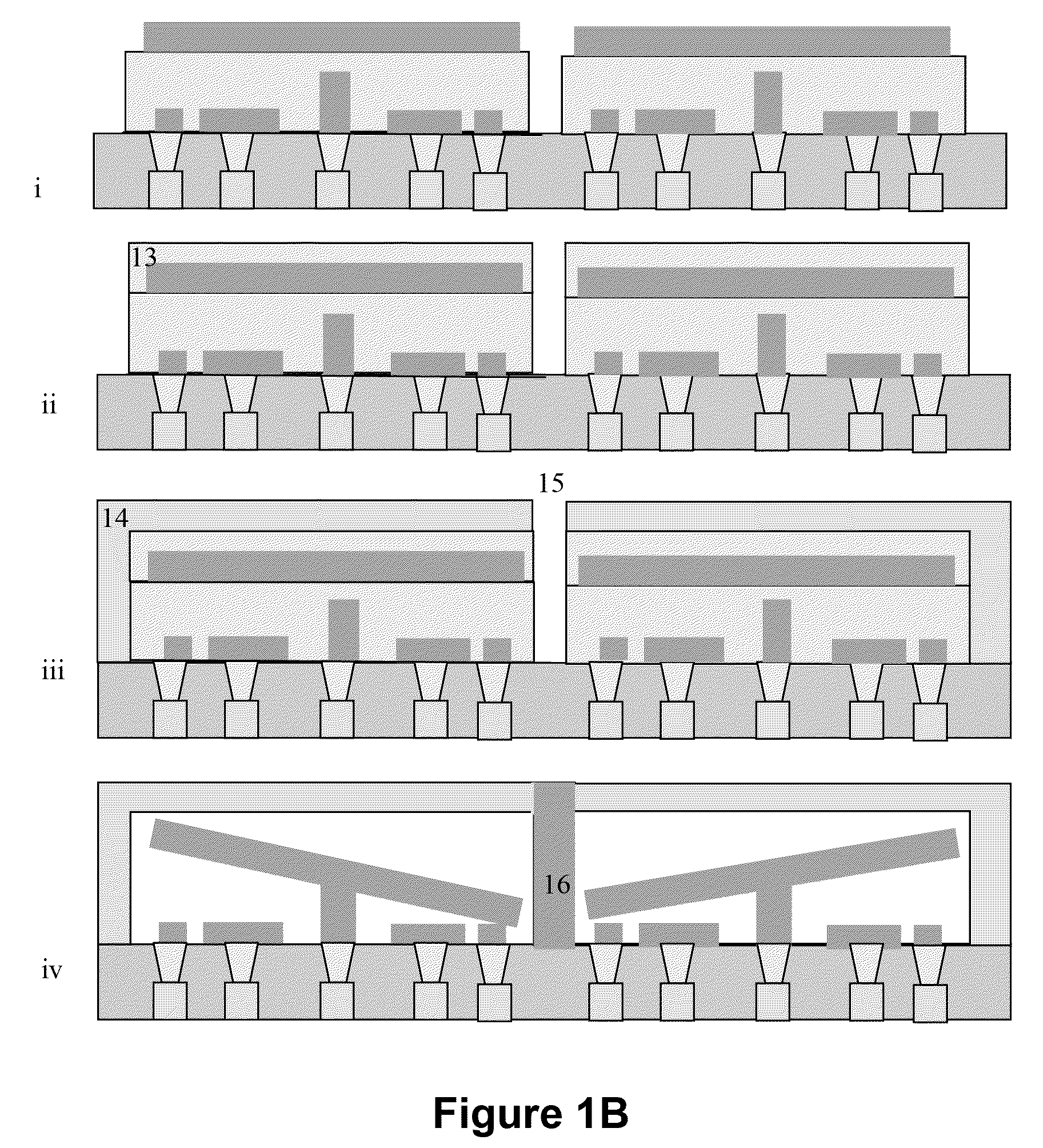Fabrication of a floating rocker MEMS device for light modulation
a technology of light modulation and fabrication method, which is applied in the direction of microelectromechanical systems, instruments, coatings, etc., to achieve the effects of improving contrast ratio, reducing the number of pixels, and fast switching array of mirrors
- Summary
- Abstract
- Description
- Claims
- Application Information
AI Technical Summary
Benefits of technology
Problems solved by technology
Method used
Image
Examples
Embodiment Construction
[0029]FIG. 1A shows how the floating rocker device could be manufactured. Initially the substrate material is prepared with vias 3 from metal tracks 2 leading up through an insulating layer that could be silicon dioxide or silicon nitride or some other insulating or semi-insulating layer. This could be the interlayer dielectric of a CMOS device with active CMOS addressing for the mirror array defined underneath. The first MEMS layer to be deposited could be a TiN layer which will be used for part of the base for the post 6 which the rocker will land on when released. The first MEMS layer is patterned using optical lithography processes usually found in semiconductor processing plant. The optical lithography processes could include wet etching of the metal layer under a patterned resist layer or dry etching of the layer using a plasma etch process.
[0030]After the first MEMS layer is etched to leave the base of the post 6, a second layer which may also be TiN, will be deposited. The s...
PUM
 Login to View More
Login to View More Abstract
Description
Claims
Application Information
 Login to View More
Login to View More - R&D
- Intellectual Property
- Life Sciences
- Materials
- Tech Scout
- Unparalleled Data Quality
- Higher Quality Content
- 60% Fewer Hallucinations
Browse by: Latest US Patents, China's latest patents, Technical Efficacy Thesaurus, Application Domain, Technology Topic, Popular Technical Reports.
© 2025 PatSnap. All rights reserved.Legal|Privacy policy|Modern Slavery Act Transparency Statement|Sitemap|About US| Contact US: help@patsnap.com



